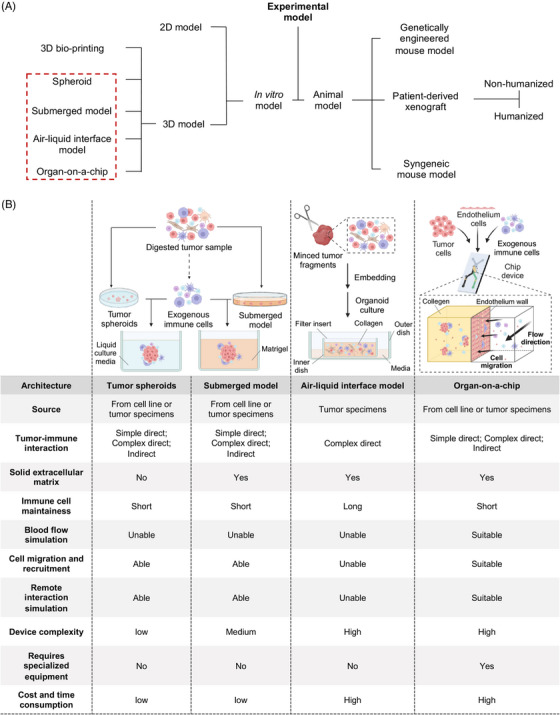FIGURE 3.

Comprehensive comparison of 3D tumor‐immune coculture system with different construction approaches. (A) Experimental models can be classified into in vitro models and animal models. In vitro models can be further divided into 2D models and 3D models which encompass spheroid, submerged model, air–liquid interface (ALI) model, and 3D bio‐printing based model. For animal models, they can be separated into syngeneic models, genetically engineered models, and patient‐derived xenografts. (B) Tumor immune microenvironment can be generated in in vitro 3D tumor‐immune coculture by four construction approaches. (1) Left: for tumor spheroid and submerged model, tumor‐immune interaction can be simulated by adding exogenous immune cells. (2) Middle: in the ALI model, minced tumor tissue fragments containing both tumor and immune cells are embedded in collagen. (3) Right: for the microfluid chip, tumor cell spheroids are mixed with collagen and injected into the central compartment while immune cells are circulating. Figure was created with BioRender.com.
